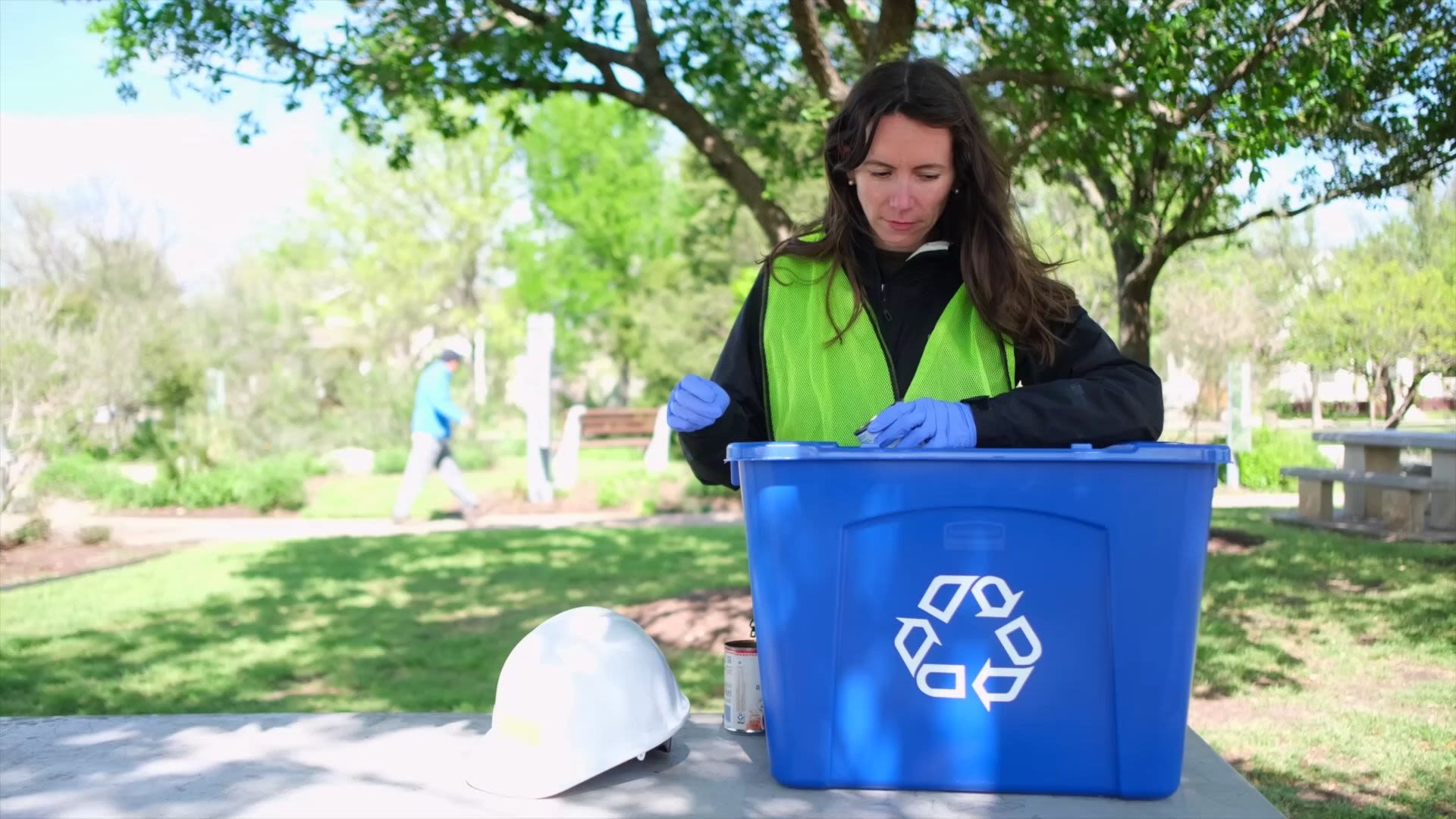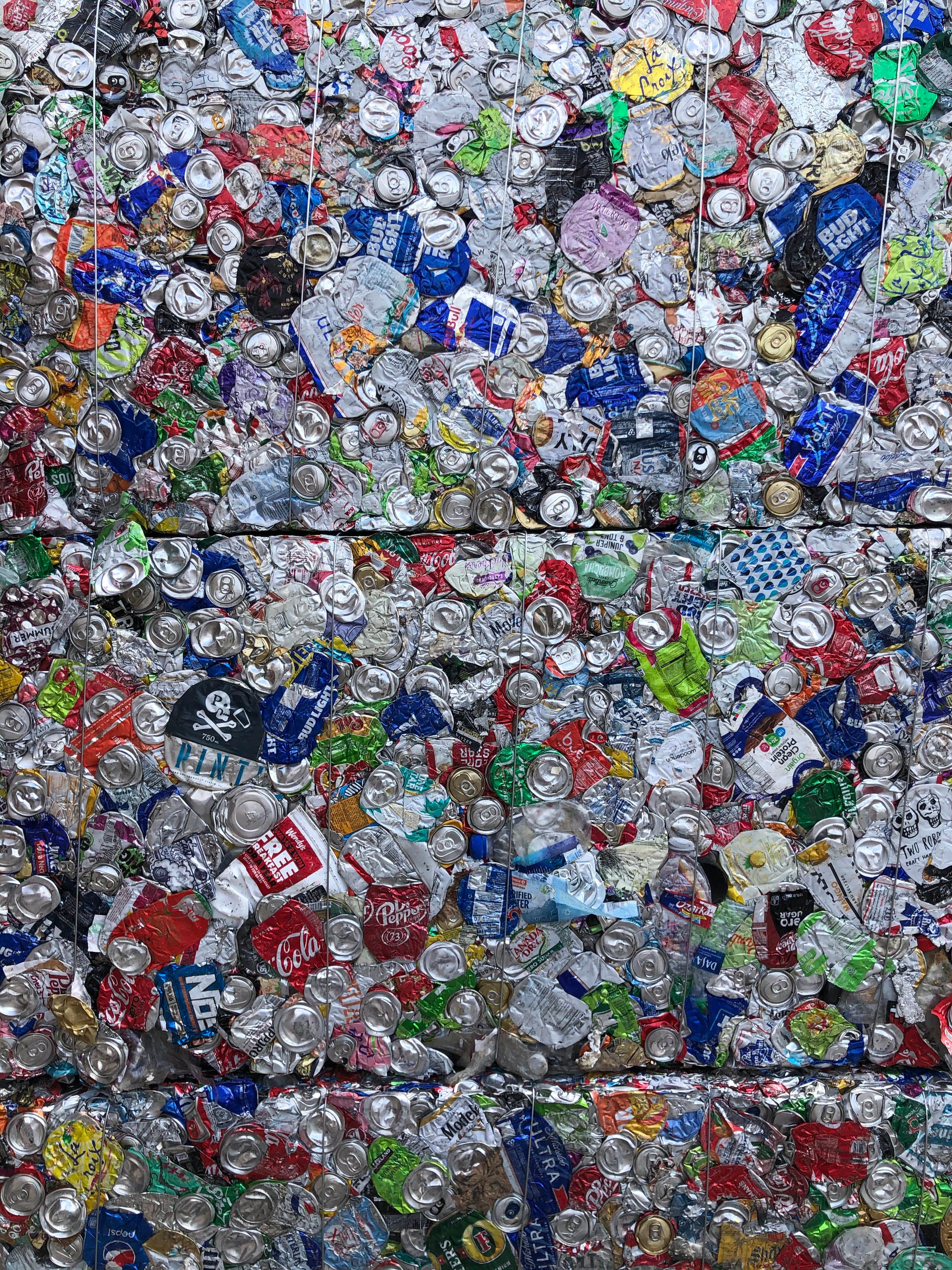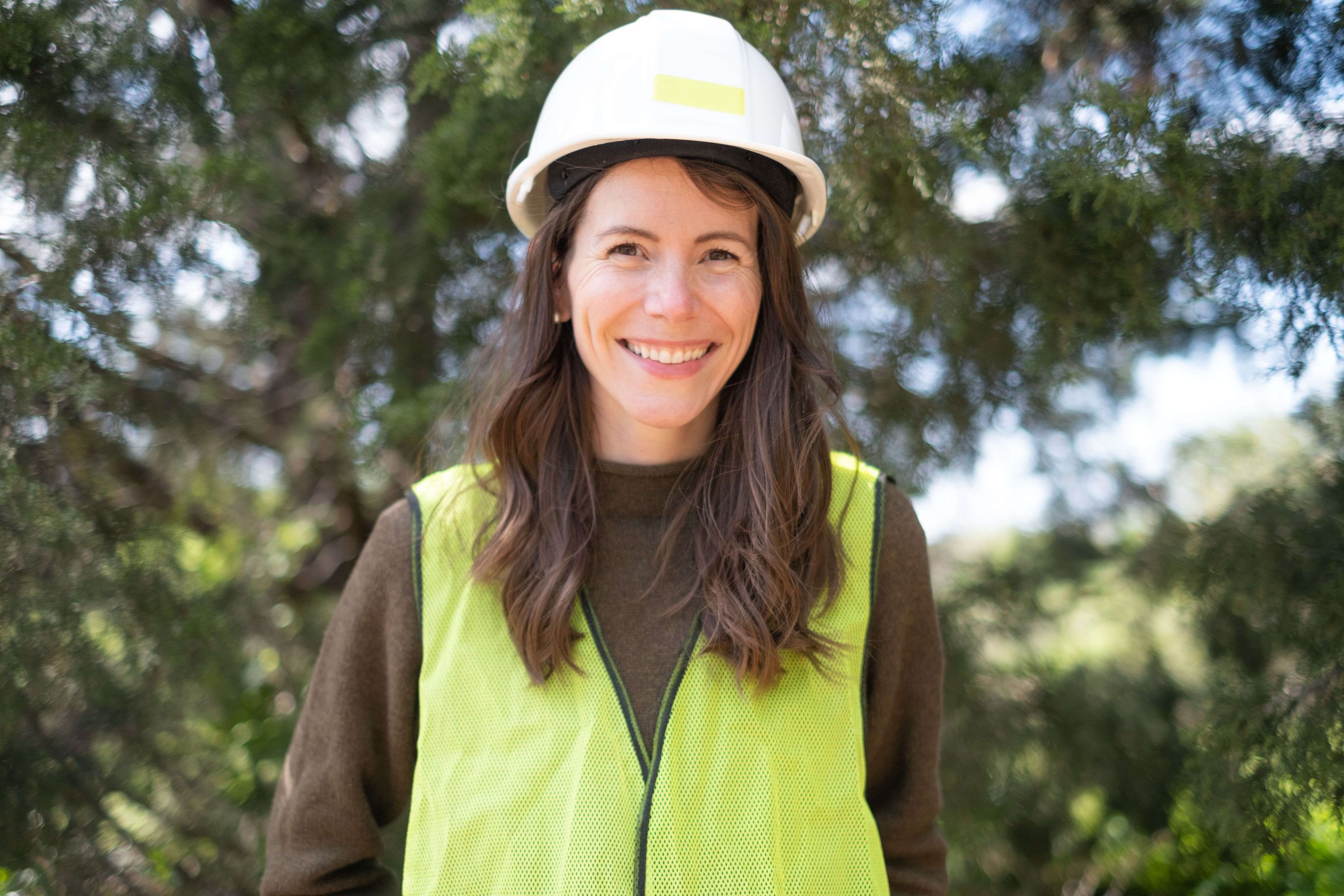Inside Recycling Facilities and the Robots that "Run" Them
Inside Recycling Facilities and the Robots That "Run" Them
The Untold Story of Women in AI

Inside a local recycling facility, giant robotic machines use artificial intelligence to quickly scan hundreds of tons of waste to identify and sort costly plastics.
That’s right, not all plastics are made equal.
High-density polyethylene plastics — think milk jugs and detergent bottles — are stronger and more durable, and therefore more valuable. Through machine learning, the robots have learned to identify the characteristics of these items, their size, shape and composition, and then use a suction device to grab them and divide them into piles to be recycled.
These machines are meant to function independently, without human intervention, performing the job of sorting better than a person can.
But do they?
Communication Studies Assistant Professor Samantha Shorey and Journalism and Media Ph.D. student Dominique Montiel Valle have been studying these machines and the people who operate them over the past two years as part of a research study funded by the National Science Foundation in response to COVID-19. They’ve spent dozens of hours at a local recycling facility, watching the robots in action and interviewing the workers that use them every day. And their findings, which will be published in April in the journal "Computer Supported Cooperative Work," say a lot about the ways we think about AI and the future of work.
In actual practice, a human sorter has to be placed next to the robots at nearly all times, standing next to the metal cage that houses the expensive machine, to collect all the high value plastics the machine drops or leaves behind.
At the recycling facility that Shorey and her team visited, those workers were almost entirely Latina women. And, according to Shorey, they are rarely, if ever, recognized as part of the narrative of AI.
“This to me is the story of technology, that technologies we think of as seamless, automatic and effortless are instead totally composed of people working every day to keep things running,” Shorey said. “One of the things that we saw at the facility is that the women who work on sorting lines were creating inventions and physical infrastructure to make the AI technology work better. So, who we think of as innovative really has to change. The people who do recycling sorting work aren’t reflected in the typical, mental image people have of programmers and coders. These women are basically co-designing AI. They're making AI.”
"Technologies we think of as seamless, automatic and effortless are instead totally composed of people working every day to keep things running."

An expert in design research, Shorey looks at the ways we communicate about robots. Do we trust them? Do we think they are helpful? Do we have an accurate perception of them — their functionality, how they are made, what they can accomplish? Are our stories accurate?
These questions are becoming increasingly more important as AI becomes embedded in every part of our lives.
Shorey admits, unapologetically and with a bit of humor, she’s obsessed with trash. And after spending two years in recycling facilities, she knows a lot about it.
Before embarking on this latest research project, she conducted a media analysis along with journalism and media undergrad Estefania Rodriguez, looking at all the reporting that had been done on the recycling industry and automation the five years prior to COVID. With a data set of 50 articles, they found that not one of them included the perspective of workers. They only quoted CEOs, technology designers and facility managers, people with a certain expertise.
“Those companies were being given the platform to tell the story of this technology, rather than the people who are working alongside it,” Shorey said.
So when the NSF began offering grants in response to the COVID-19 pandemic — in this case to look at automation that would reduce human-to-human contact — Shorey thought it would be a great opportunity to get into these recycling facilities and find out the real story of AI, from the workers’ perspectives. What is it like to actually work with these machines?
She and Montiel Valle put on their hard hats and steel-toed boots and got dirty.

Shorey compares recycling facilities to a game of Mouse Trap — if you remember the board game created in the 1960s. It’s piece after piece of interlocking equipment, one piece that feeds into another to carry out the different elements of recycling. Items go through the sorting process by category. Giant fans blow paper. Magnets pull out aluminum. Huge drums shake the garbage to pan out broken glass similar to how you would imagine someone panning for gold. Amid all this machinery is a surprising amount of wildlife. Recycling facilities and dumps are havens for birds and butterflies — and rats of course.
While all this equipment is crucial, it absolutely cannot function without humans. In the facility, workers are stationed in various sections to separate out items that can’t be recycled — which happens a lot, Shorey said. It’s called “wish cycling.” People often throw material into recycling bins items that can’t be recycled, which can jam the machines and bring the entire facility to a grinding halt. Because these items are so varied, you can’t really program a machine to sort them out.
Montiel Valle, who is bilingual, went weekly to the recycling facility to talk to workers, most of whom are Spanish speakers, to learn the ins and outs of their jobs, how they interact with new technology and what happens when the machines break down.
“I would say the main thing I gleaned from my conversations with sorters is that they really know these machines in a way that the lay person would not assume,” Montiel Valle said. “We tend to the think the people that know the most about AI are engineers or programmers who have specialty knowledge about technologies. These women, just from the sheer fact of working eight hours along these technologies, knew them to the point that was really intimate, the quirks of the machine similar to a person, things they could take, and they couldn’t. They came up with solutions, tools they made themselves to streamline these machines.”
For example, because of the gargantuan nature of the facility and all the machines that interconnect, there are a ton of nooks and crannies where trash can accumulate and get stuck, then break conveyer belts. Workers have built special devices to unstick materials. And with the two robots, they’ve worked out systems to check on the machines every 10 minutes to observe and troubleshoot in case anything goes wrong.
“These things aren’t in a training manual, and they are clearly unforeseen by people building these machines,” Montiel Valle said. “They are problems you can only see when the machines are in action.”

“We tend to the think the people that know the most about AI are engineers or programmers who have specialty knowledge about technologies. These women, just from the sheer fact of working eight hours along these technologies, knew them to the point that was really intimate."

Even with these challenges — and maybe because of these challenges —Montiel Valle found that the women felt fulfilled and proud of the work they are doing.
However, they are not recognized to the extent that they should be for their work, Shorey said.
“Robotics are accelerating and intensifying the work that women in the facility are doing,” she said. “They’re having to do their own jobs, but they're also having to watch out of the corner of their eyes the work that the machines are doing, communicating to supervisors and the repair team at the facility when things are going wrong. So the weight, the shape of their job has changed. But they're not getting paid any differently.”
While a lot of their work is really repetitive, there is a huge technical component that is not being acknowledged or compensated, Shorey said.
“One thing we heard from the workers was that the executives would come to do a monthly visit and ooo and ahhh at the AI machines,” Montiel Valle said. “But there isn’t necessarily that same kind of recognition for the work these women do.”
Shorey said this needs to change, which means we have to learn to communicate more honestly and in a more informed way about the role of human workers in AI. The women in the facilities are the last mile in AI development, and we need to acknowledge that, Shorey said.
“Everybody is really excited about boosting this technology, yet there is this labor behind it that’s not being seen,” Shorey said. “I am really excited that we get to have this conversation and share this research as a way of giving a counter narrative that pushes against the hype.”
“Everybody is really excited about boosting this technology, yet there is this labor behind it that’s not being seen,” Shorey said. “I am really excited that we get to have this conversation and share this research as a way of giving a counter narrative that pushes against the hype.”


